We have a pot. 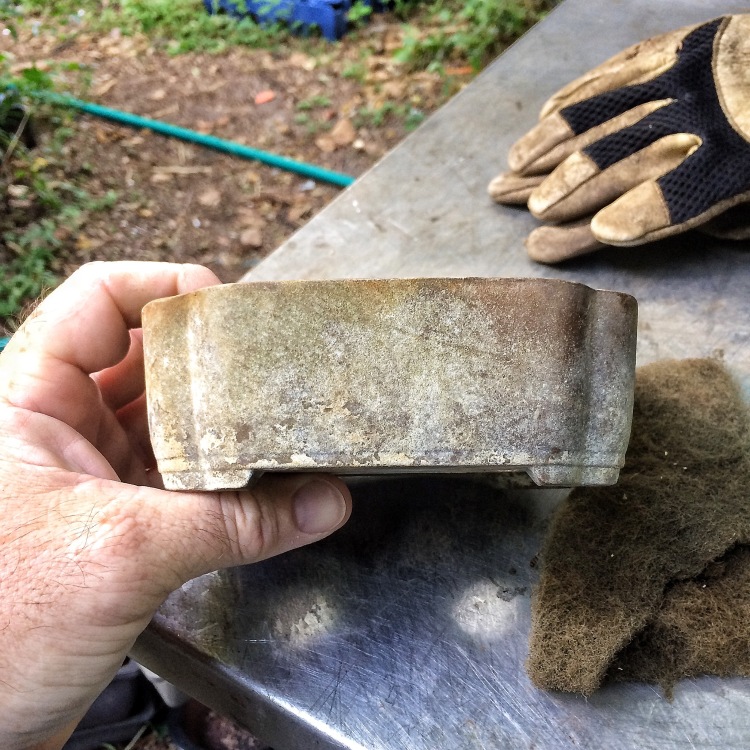 You may remember this calcium and lime riddled pot from that popular and witty post: Buy the Trunk, not the Branches. The tree featured was suffering pretty badly from chlorosis and neglect.
You may remember this calcium and lime riddled pot from that popular and witty post: Buy the Trunk, not the Branches. The tree featured was suffering pretty badly from chlorosis and neglect.
Our pot has what could be called “patina”. Lots of patina. I might even call it “the Florida Patina”…. even. Way too much, in my opinion. It’s the result of the Florida water, of which our source is an aquifer (the Floridan Aquifer System) located underneath most of the state and is encased in carbonate rock (fossilized coral really) that was formed during the Paleocene to Miocene eras when Florida was underwater. The water in the aquifer is estimated at about 17-26,000 years old, not that old really. The water in Orlando is drawn from what’s called the deep aquifer….
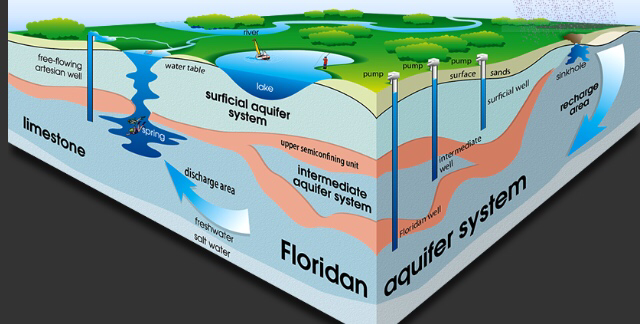 Which is on the edge of the true Floridan aquifer. But our poor pot comes from the Palm Beach area, which relies on the Biscayne aquifer, a surficial system. What does this mean?
Which is on the edge of the true Floridan aquifer. But our poor pot comes from the Palm Beach area, which relies on the Biscayne aquifer, a surficial system. What does this mean?
Easy, it has to do with the amount of dissolved solids present in the water. There are so many dissolved solids in the Biscayne aquifer that, for it to be potable, the water must go through treatment to remove some of it. I think this is why so many old people move there; the extra calcium in the water helps those aged brittle bones….sorry, I just offended half of my readers. Orlando has from 0-250 milligrams per liter of these dissolved solids (calcium, rust, lime etc) whereas the Palm Beach area easily surpasses 1000 mg per liter. All this adds up to this on your bonsai pots.
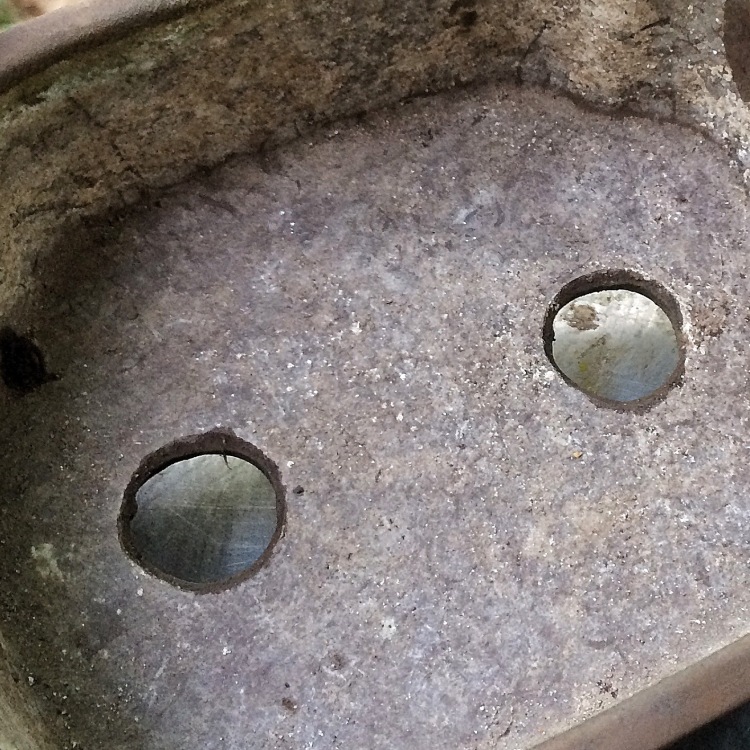 I know that I’m going to be asked this question from my friend Rick so I’ll answer it now: you, my friend, are on the edge of the Orlando water source so your water is probably about twice as hard as mine. Sorry man. But this post is for you!
I know that I’m going to be asked this question from my friend Rick so I’ll answer it now: you, my friend, are on the edge of the Orlando water source so your water is probably about twice as hard as mine. Sorry man. But this post is for you!
Ok, enough back story, regardless of how the mineral deposits got there, they are there (that’s a profound philosophical statement right there) what to do? Well, I, me, myself, I will do this, which is completely made up by me and my own brain. You may quote me and and use these methods yourself, but be warned, it’s not the “classic” way, and that opens you up to all types of discrimination and ridicule.
First, let’s gather some stuff.
This is super-fine synthetic steel wool. It’s a lot like those green scotch bright pads.  Silicone spray. It doesn’t matter what brand. I like this because of the use of the word “fabulous”.
Silicone spray. It doesn’t matter what brand. I like this because of the use of the word “fabulous”. 
Gloves, so I don’t have to smell silicone spray on my hands when I’m eating my microwaveable beef ‘n bean burrito I plan on having for lunch later. I’m very sensitive to smells on my hands. Let me illustrate: I use baby wipes quite a bit all of a sudden (I use them in an operation called “swabbing the opening of the bag”. I won’t explain that, you’ll have to figure it out yourself) and I can’t stand the baby fresh scent most wipes have to them. Therefore, I use, specifically, the off-brand that Dollar General sells. Don’t judge me. 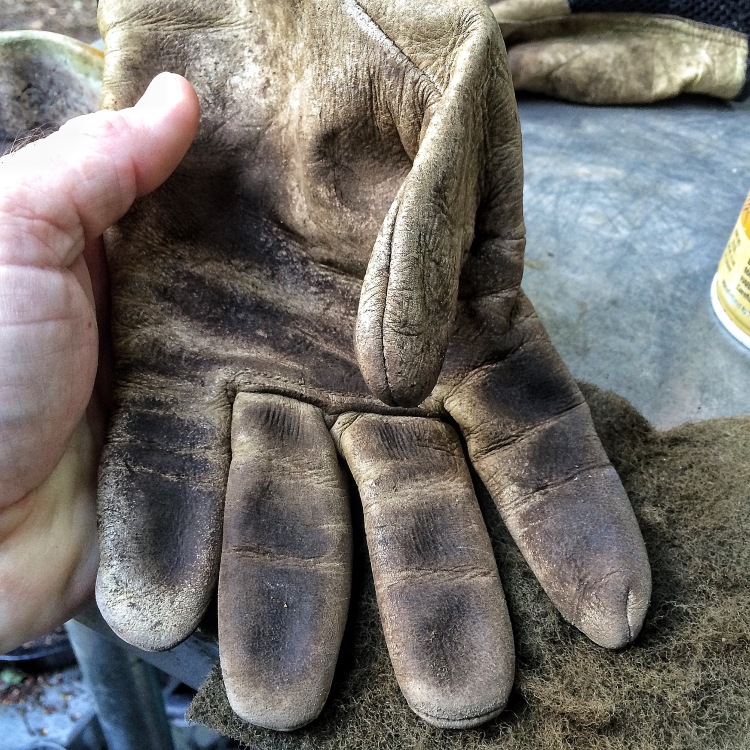 Curiously, I don’t mind the smell of sweaty leather on my hands…….man, there’s so many jokes I could make there.
Curiously, I don’t mind the smell of sweaty leather on my hands…….man, there’s so many jokes I could make there.
Let it begin. Usually, in the bonsai world, the oil of choice is camellia oil. I can’t afford camellia oil. So, today I am trying, first, silicone spray.
Some on the pot.  What I’m trying to do here is to remove some of the scale build up but not all of it. Contrary to what many think, some grime and dirt build up, if properly oiled and prettified, is actually a desired feature on a pot. The old and weathered is revered in the east and in Japan especially, age in an object is respected. But it must be well cared for and curated properly. Hence the meticulous and almost ritual oiling and polishing that pots are subjected to.
What I’m trying to do here is to remove some of the scale build up but not all of it. Contrary to what many think, some grime and dirt build up, if properly oiled and prettified, is actually a desired feature on a pot. The old and weathered is revered in the east and in Japan especially, age in an object is respected. But it must be well cared for and curated properly. Hence the meticulous and almost ritual oiling and polishing that pots are subjected to.
Not bad. Could be darker.
I did not use any oil on the inside of the pot in case it might hurt any tree I might put in it.
 For that buildup on the inside I’ll use just water and a wire brush.
For that buildup on the inside I’ll use just water and a wire brush.
Huh, look at how the water beads off the surface.  I know that these highly refined oils have a tendency to evaporate so the next step is to let the pot dry to see how well the silicone spray worked.
I know that these highly refined oils have a tendency to evaporate so the next step is to let the pot dry to see how well the silicone spray worked. 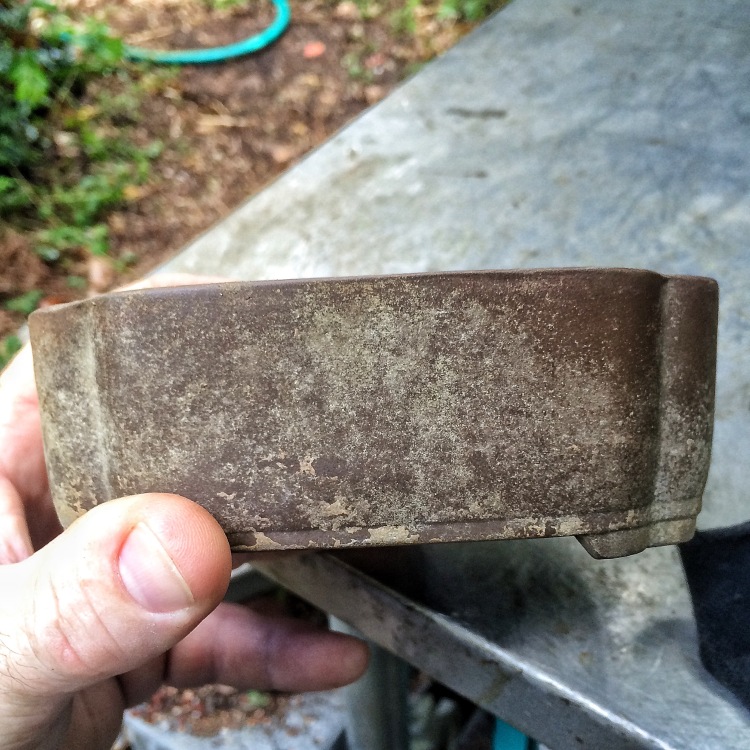 Not very good, huh?
Not very good, huh?
Ok, let’s try 3-in-one oil.
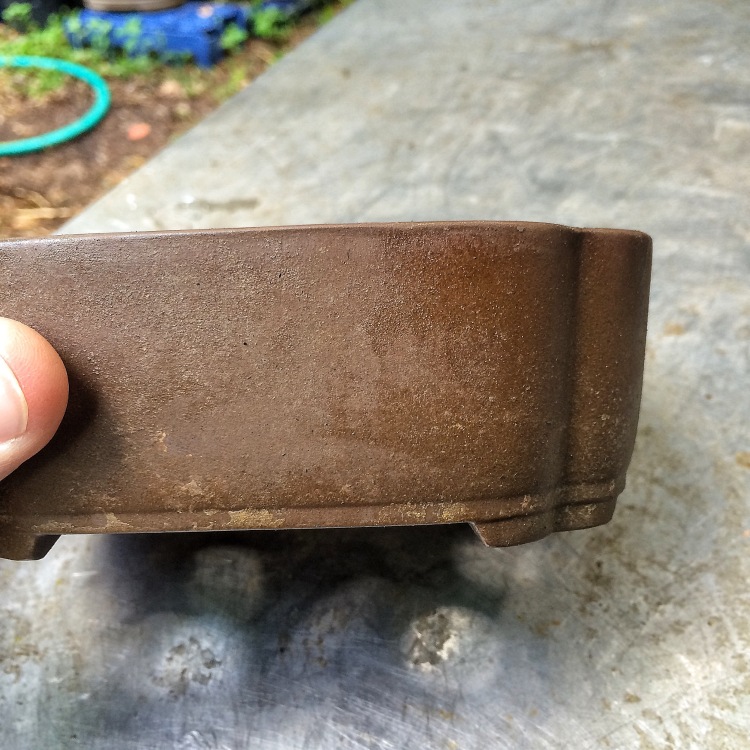

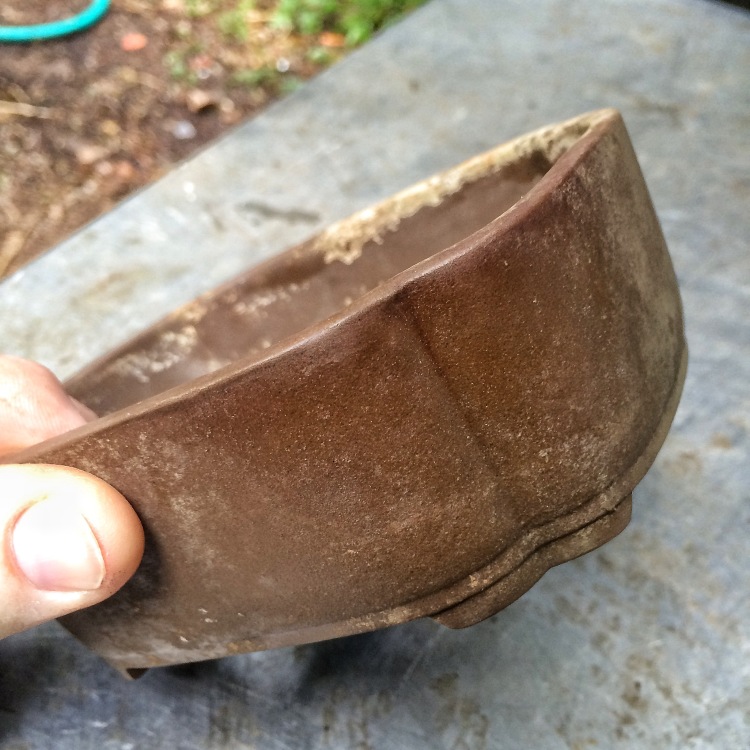 Maybe a little burnishing with my scrub pad.
Maybe a little burnishing with my scrub pad.
 Oh yeah, I like that.
Oh yeah, I like that. 
This is a secret, so don’t tell anyone, but most of today’s camellia oil is actually a mixture of 3-In-one oil and camellia oil. The reason is that camellia oil being a plant based oil, tends to go rancid, and a petroleum oil added to it, stabilizes it. It is possible to get 100% pure camellia oil (tsubaki oil as its sometimes called) and that’s what you want if you are oiling chefs knives as it’s non toxic. Food grade mineral oil is also good for knives too. And pots as well. It makes a good massage oil when you’ll be using your tongue as well. But for that, the flavored oils are my go to (strawberry is my favorite).
Anyway, how’d the 3-in-one work after drying? You tell me.
 Nice! That’ll work for an exhibition, just enough patina to make the pot look old….but not so much to offend the OCD.
Nice! That’ll work for an exhibition, just enough patina to make the pot look old….but not so much to offend the OCD.
Ok. How about two months later? (I actually did all this work before I got sick this last time, at the beginning of June. It’s August now)
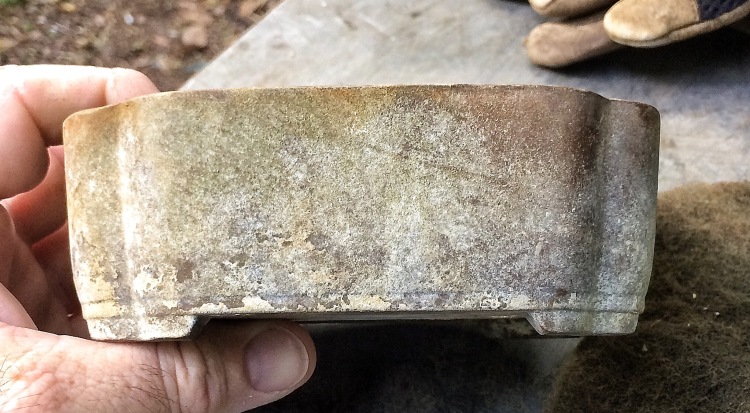 I think it looks pretty good. It just needs another oiling……like a young Arnold Schwarzenegger in his Mr. Olympian days.
I think it looks pretty good. It just needs another oiling……like a young Arnold Schwarzenegger in his Mr. Olympian days. 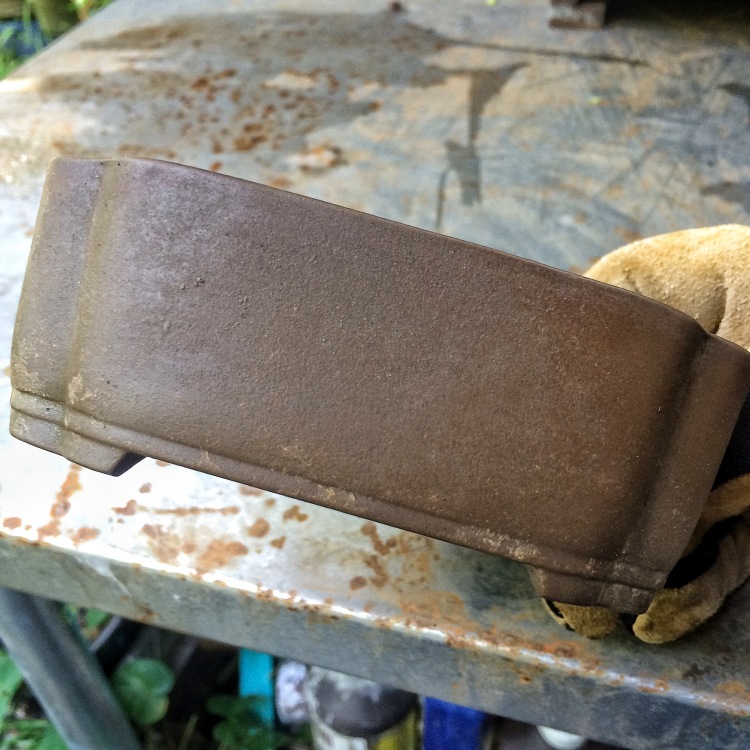 Good….
Good….
When I use this pot, this will be the front.
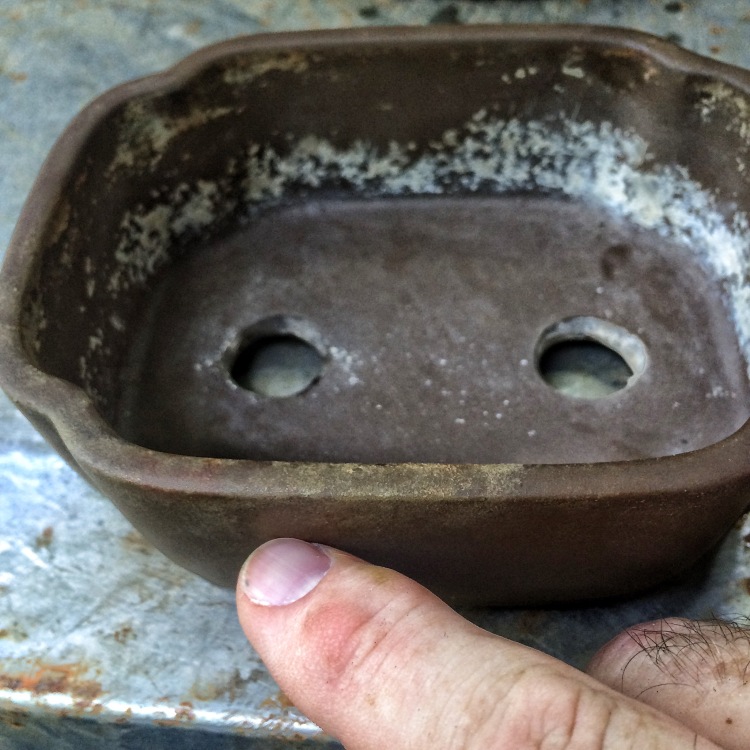 This rust and gunk is like one of those planned drips on a glazed pot, but totally random and wabi/sabi. Sweet!
This rust and gunk is like one of those planned drips on a glazed pot, but totally random and wabi/sabi. Sweet!
And, since I’m known for it, a last glamour shot. 
Some people think I use filters on some of my photos. I don’t, I use an app called “Snapseed” that allows me to adjust individual values like saturation, contrast etc. and I really just make the photo look like the way I see it. Try it out and stop using those canned filters. Your pics will look so much better.
Now, if you want to remove all the scale off the pot and want it to look new, use muriatic acid or that CLR stuff designed for it. And, for good or bad, I’m sure that I’ll be bombarded with the “Proper” technique from all over the cybersphere, just make a comment in the blogs comment section, not on my various crosspost profiles, so that the readers can see what you have to contribute.
And that’s all, direct from the confines and dark passages of my, perhaps, uncouth and unconventional mind.



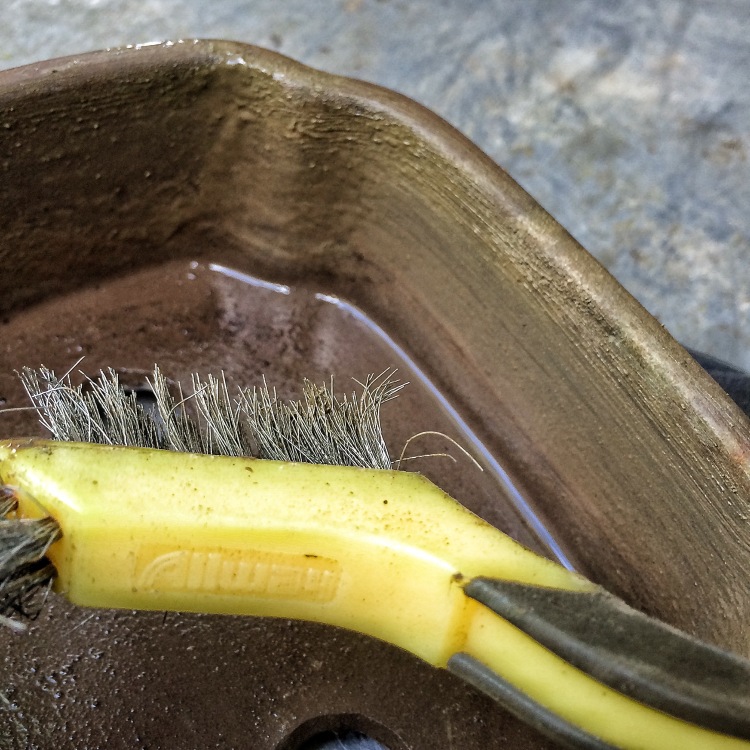
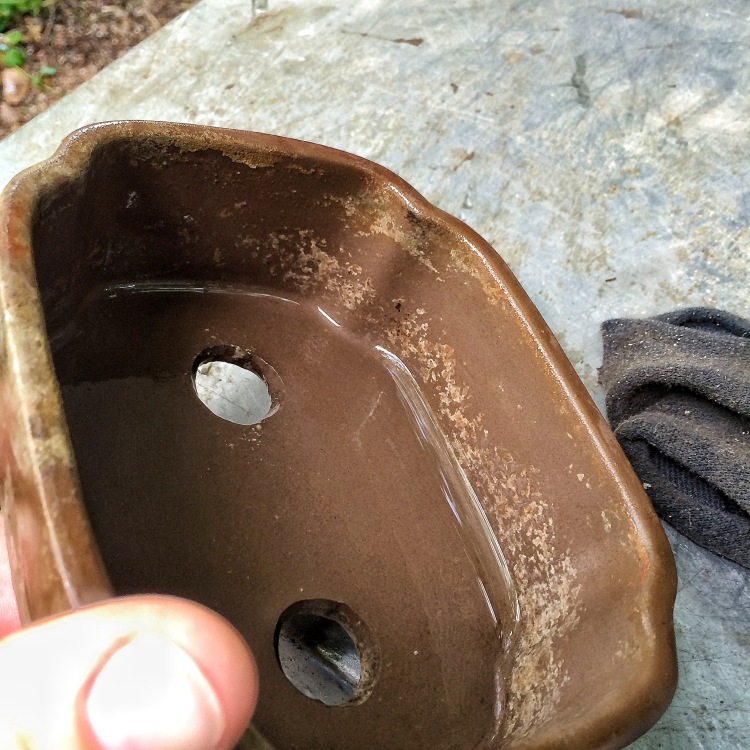

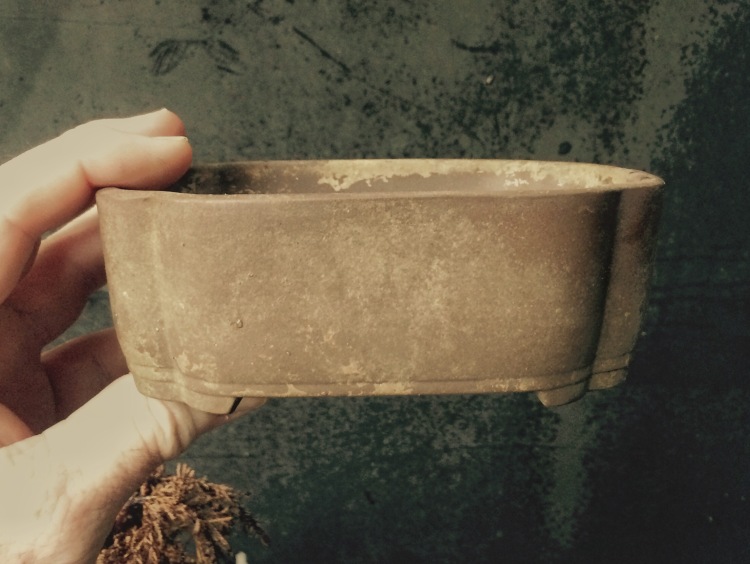
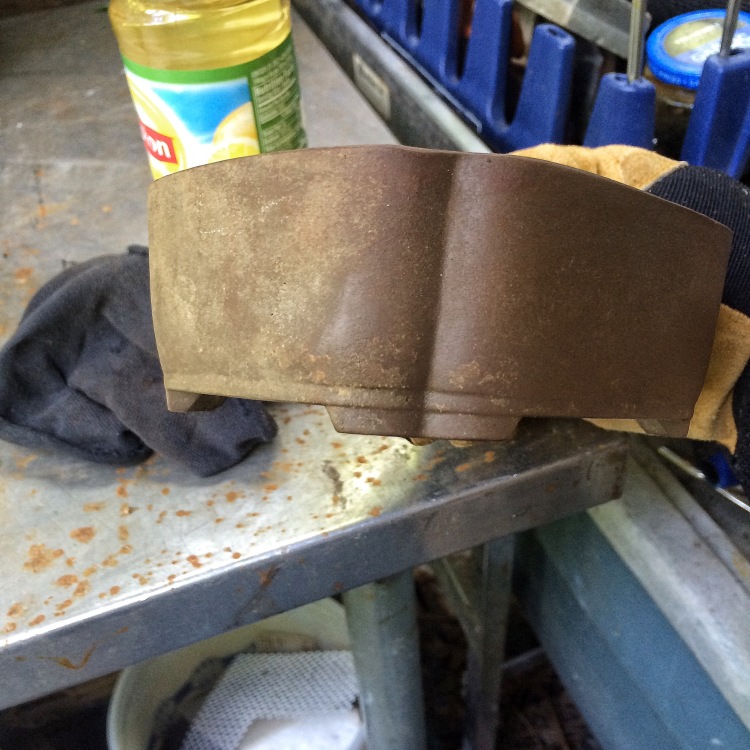
Thanks Adam…….now the whole buildup is as clear as mud or east Orange County water……..
LikeLike
Do you ever use the 3-in-1 oil for your tools? I have some laying around but I didn’t know if it would be the best way to keep my tools from rusting out.
LikeLike
I use the 3-in-one oil exclusively on my tools actually CD. I clean with a wire brush and a scotch pad, sharpen with a diamond wet stone and oil the whole thing with the oil. Even the stainless steel ones, because there’s enough iron in them to get minor rust, especially near the heels and the joint/screw/pivot area
LikeLike
Adam, 50 something, horticulturist – bonsai and beer loving follower from Sydney in OZ, mate love your work, keep healthy and keep ’em coming.
LikeLike
Reblogged this on Bonsai & Yamadori from Tony Tickle and commented:
We have soft water but for all the Southern softy shandy drinkers who read my blog…this is for you
LikeLike
Good post. I’ve heard people suggest burying pots to get rid of calcium deposits, but never saw it documented. Here are the results of a year underground for an old Heian Kouso:
https://nebaribonsai.wordpress.com/2015/01/24/removing-calcium-deposits-from-pots/
LikeLike
Interesting
LikeLike
You did a great job. Actually you inspire me to clean my pots. I am so glad that I have found your article. Thank you for explaining so simple. Greets!
PS Love your photos.
LikeLike
Thanks a lot very informative
LikeLike